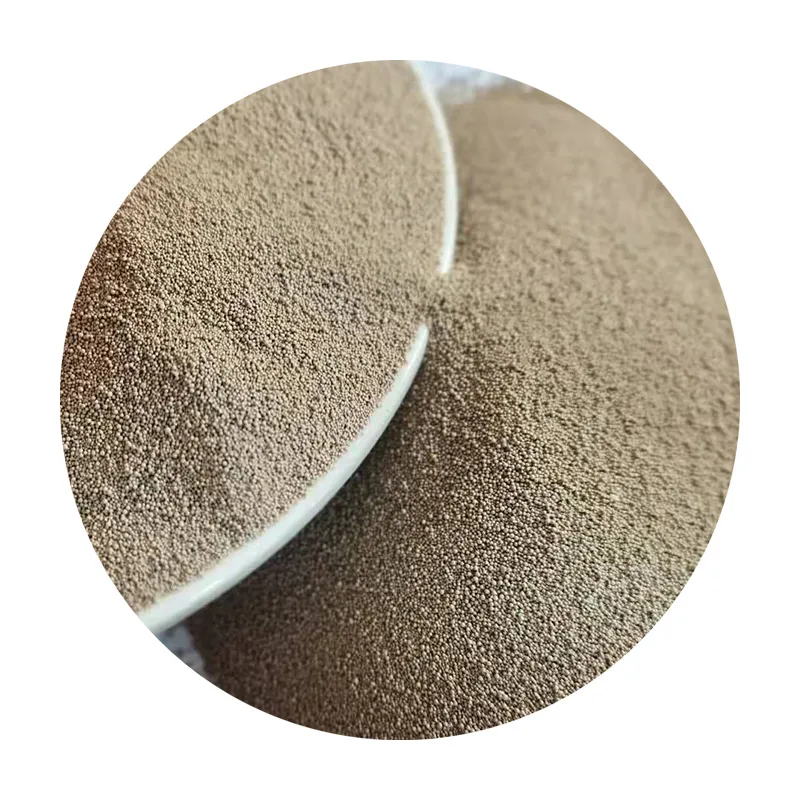Revolutionizing mold production and architectural detailing, 3d printing sand is reshaping how manufacturers, builders, and designers approach complexity, customization, and efficiency.

Why Mullite Makes a Perfect Raw Material for 3D Printing Sand
One of the most critical innovations driving the success of 3d printing sand is the use of mullite as a core raw material. Mullite, a naturally occurring aluminosilicate mineral, is highly valued for its exceptional thermal stability, low thermal expansion, and excellent mechanical strength. These properties make it the ideal base for printing complex sand molds that are required to withstand high-temperature metal casting processes without deforming or cracking.
The use of mullite in 3d printing sand ensures dimensional accuracy and surface integrity of the printed molds, even under extreme temperatures. It reduces the risk of sand expansion-related defects, making the final casting not only more accurate but also safer and more reliable. Furthermore, mullite’s chemical inertness allows 3d printing for sand casting to be compatible with a wide range of metal alloys—including aluminum, iron, steel, and superalloys.
With this technological edge, 3d printing sand enables industries to push boundaries, especially in fields where material performance directly affects product safety, such as aerospace, automotive, and energy.
Construction Industry Embraces the Power of 3D Printing Sand
Beyond the foundry, 3d printing sand is making bold inroads into the construction industry. Thanks to its ability to produce complex geometries without formwork or traditional molds, this technology offers unprecedented freedom in architectural design. From customized façade panels to intricately shaped structural elements, 3d printing for sand casting provides an efficient, cost-effective method for realizing large-scale and artistic concrete components.
Architectural firms have started using sand-printed molds for precast concrete, enabling the creation of unique surface textures and complex lattice forms that were previously too expensive or impossible to fabricate. This has opened doors to sustainable, design-led construction, especially in urban architecture, luxury developments, and public infrastructure projects.
Moreover, the accuracy of 3d printing sand reduces material waste and shortens turnaround times. This enhances sustainability and significantly lowers total project costs, making it an appealing solution for eco-conscious developers and engineers alike.
3D Printing Sand:Market Outlook
The global market for 3d printing sand is on a steep upward trajectory. With increasing demand for customized production and rapid prototyping, sectors like automotive, heavy equipment, renewable energy, and defense are heavily investing in 3d printing for sand casting technologies. These sectors are leveraging the speed, flexibility, and accuracy of the technology to accelerate product development cycles and maintain a competitive edge.
Companies looking to enter this field often begin by evaluating 3d sand printer price and potential ROI. While the initial investment in 3d sand printer price may seem significant, the reduction in tooling costs, labor savings, and faster production schedules quickly offset the capital expense. The ability to produce complex molds on demand, without the need for large inventories or storage, further drives cost-efficiency.
In the next few years, it is anticipated that 3d printing sand will become the default method for low-volume, high-value part production, particularly in high-tech industries where precision and innovation are paramount.
3D Printing Sand Digital Workflow Integration: Why It Matters Now More Than Ever
Another major advantage of 3d printing for sand casting is its seamless integration with digital design and manufacturing workflows. CAD files can be directly converted into mold designs and printed with high fidelity using specialized software, allowing for rapid iterations and design validation. This flexibility is crucial in today’s dynamic manufacturing environment, where short lead times and product personalization are key drivers of success.
With 3d printing sand, product engineers can prototype, test, and produce end-use parts within days instead of weeks or months. This drastically improves development timelines while also reducing costs associated with tooling and waste. As companies increasingly adopt Industry 4.0 principles, 3d printing for sand casting fits perfectly within smart factory ecosystems.
And with the improvement of binder jetting technology, 3d sand printer price is gradually becoming more accessible to medium-sized foundries and research institutions, pushing innovation even further.
3D Printing Sand FAQs
Why is mullite preferred in 3d printing sand?
Mullite offers excellent heat resistance, low thermal expansion, and high mechanical strength, making 3d printing sand highly stable and precise, even in high-temperature metal casting applications.
What are the benefits of 3d printing sand in construction?
3d printing sand allows for custom concrete molds with complex geometry and fine textures. It eliminates the need for traditional formwork, reduces material waste, and lowers labor costs in architectural and structural components.
How is 3d printing for sand casting better than traditional mold making?
3d printing for sand casting enables faster production, eliminates tooling costs, and offers high geometric complexity with excellent repeatability, especially for low-volume and specialized castings.
Is the 3d sand printer price worth the investment?
Yes. Although the 3d sand printer price can be high initially, the long-term benefits in speed, labor reduction, and cost savings on tooling make it a smart investment for progressive manufacturers and foundries.
What industries benefit most from 3d printing for sand casting?
Automotive, aerospace, construction, energy, and industrial design sectors are some of the primary adopters of 3d printing for sand casting, thanks to its speed, precision, and customization capabilities.
Post time:Meh . 05, 2025 15:54Next:Polished 3D Prints Sanding Machines & Tools for Flawless Finishes
